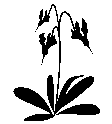 |
Shinners & Mahler's Illustrated Flora of North Central Texas |
 |
Shinners & Mahler's Illustrated Flora of North Central Texas |
A REVIEW
by Marshall C. Johnston
Co-author of Manual of the Vascular Plants of Texas, 1970
This review will be published in the upcoming issue (Vol. 18, No. 3) of Sida, Contributions of Botany
Diggs, George M., Jr., Barney L. Lipscomb, and Robert J. O'Kennon 1999. SHINNERS AND MAHLER'S ILLUSTRATED FLORA OF NORTH CENTRAL TEXAS. Center for Environmental Studies and Department of Biology, Austin College, Sherman, Texas, and Botanical Research Institute of Texas (BRIT), Fort Worth, Texas. xii + 1626 pages.
It has been a good many years since a genuine, bonafide complete hard-copy flora has appeared for Texas or any substantial part of Texas. Thus it is with some excitement that we received this new book. The reviewer of this new FLORA was daunted by the heft (at almost 10 pounds it builds up the deltoids etc.) and 1600 pages crammed with information. Obviously one cannot read every word and examine every illustration in a few hours of perusal. My notes are pretty effusive - with a lot of overused adjectives they'll rate a goose-egg in any journalism class - but who cares, so here goes: INCREDIBLE, FANTASTIC, WONDERFUL, BEAUTIFUL ETC. WOW! To be more specific: COMPREHENSIVE, ENCYCLOPEDIC, INNOVATIVE. With every species illustrated - it's a new departure in Texas floras, a breath of fresh air. More than any other flora of the region it approaches the oft-stated goals of floristic workers to combine professional soundness and completeness with usefulness and accessibility for people of all levels of botanical expertise and for all sorts of consumers of botanical information. In short, this is a super-fine product of a dedicated, skilled, industrious and deeply knowledgeable team of experts, who are to be praised and congratulated along with their contributors and sponsoring institutions and publishers.
Now among the gushing words a little rain must fall. Perfection has been closely approached, not fully attained. In some hours of review, about 20 mispellings have been detected, all falling into the category of minor inconveniences, none resulting in serious misunderstanding. One literature citation was repeated under two different authorships. But even a nit-piker like me can find very little to carp about.
Naturally one can differ with the authors on some of their taxonomic judgements. (Whenever 10 taxonomists are present, 30 opinions exist on any given issue.) But no need to belabor that here. The authors' judgements are all defensible, even those that differ from mine.
The beauty of the volume itself, including the section on superb color photographs, bespeaks much loving attention to the details of lay-out, typography, binding, etc., and will add to its appeal to the general public, those elusive intelligent lay persons who may spot the book in Barnes and Nobles and be captivated for the first time by a meaty type of wild-plant botany, as opposed to the pabulum in the "wildflower" books.
Praise belongs not only to the team that produced the work, but to those nameless technoids who have given us electronic sending and processing of data, words and illustrations, and electronic layout and setting of type and illustrations. This reviewer thinks back to the almost totally unillustrated Texas flora that came out in 1970. Every word was written longhand, typed manually, edited, re-typed, edited, re-typed, edited and retyped. Finally, the huge typescript was taken personally (by Donovan Correll, on the train) to a vast printshop in Wisconsin where it was set (clackety-clack, clackety-clack) in hot lead on old Linotype machines. Then the galley proofs were mailed to this reviewer in Munich, corrected by him and by Correll, then sent back to Wisconsin for re-setting. Then the work was printed in an initial run of 3,000 copies. the signatures were assembled by hand and sewn together and the books bound (about one in three was defective on the first go-round). How blessed we are to have a brand-new publishing industry in the last few decades in which a lot of the processes are streamlined and quality is so much better controlled.
So let us praise and congratulate everybody involved in this effort, and publicize this great work vigorously so that it can become a part of the collections of every institutional library and many thousands of private individuals. And let us encourage these authors and others to produce equally useful floristic accounts for the rest of Texas and surrounding regions (as they say they already plan to do), and to produce not only hard-copy but CD-ROM versions and cyberversions subject to constant up-dating. And let us encourage even more foundations to support this type of work so that it may accelerate and flourish as a background informational field on which conservation efforts may proceed and so that public awareness and enjoyment of our wild treasures may accelerate. And all the people said: AMEN.
Back to the Illustrated Flora home page